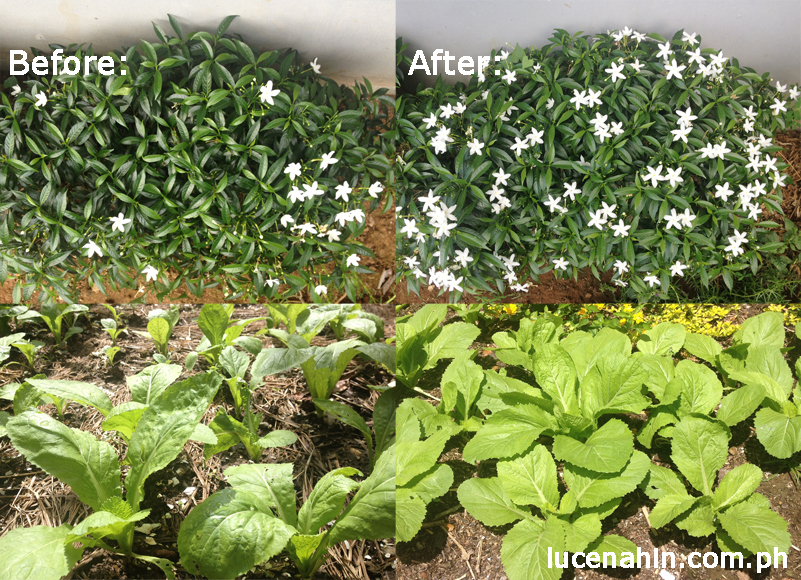Basic Composting IV: Effects of Composting in our Garden
This is the final part of the Basic Composting Series.
In this series, you’ll find easy and basic ways to make compost in your home. We have been composting for about a couple of years and with these three composting methods:
- How to compost fallen tree leaves,
- How to compost kitchen wastes with bokashi,
- And how to start a heap compost,
we have significantly reduced our waste with the least effort and our garden has certainly enjoyed the resulting compost as well. Still, there are other simple ways to create compost for your garden:
- Some people dig a small hole in their garden to bury their compost. They throw in their kitchen scraps, then add a layer of soil to cover them. As the hole becomes full, they dig another hole again and repeat the process. Other people use a big container to hold the soil instead and do the same process.
- There’s also Vermicomposting where you use special worms to eat your kitchen scraps and you harvest their ‘castings’. I’ve found many organic farms do this.
- Hugelkultur is another composting process where you create a raised garden bed by composting woods and other compostable materials. You then plant your crops in the bed.
- If have banana plants in your backyard, you can also create a Banana Circle, wherein you create a circle of banana plants and fill the center with compostable materials.
Many people also do the Chop and Drop mulching wherein everything that they ‘Chop’ from the plants, they would just ‘Drop’ and let them decompose there as mulch. This is what they do instead of composting the dried leaves and the dead plants in their garden. This usually works really well when you have a healthy soil where you have lots of good organisms to help fight the bad ones. If you also decide to do this, plants may grow where you don’t want them to, although this is good for people who likes permaculture like me.
Whichever technique you decide to use, remember it’s better to start with a simple system that you can regularly do than to start an elaborate process only to be turned off by it later. We decided to start with the leaf mold because it was the easiest way to make compost. What do you think would be the easiest for you?
Why is composting important?
Composting is about returning nutrients back to our soil. Why send them to landfills when we can easily make compost that will help us and the environment as well? A compost generally helps improve the composition of the soil, which in turn helps the plants get access to the nutrients they need in the soil. As compostable materials decompose, many organisms will feed on them. Turning the pile and keeping them damp help break the materials down faster. And as time passes by, all of them (including some of the organisms that died) turn into compost. You can either add your compost on top soil or incorporate them into the soil.
Below are a couple of before-and-after photos in our garden:
The flowers were taken 1 month and 20 days apart, after 1st application of bokashi compost. And the mustard greens 5 months apart, both taken before harvest. We didn’t use any chemical fertilizers – we only added our composts to the soil. And to be clear, I only wanted easy ways to make compost from our wastes, without necessarily producing the best compost for our garden. And even with that, you can see how our plants loved them.
Of course, there are other factors that helped and I did not perform a formal experiment, but it would be difficult to think that composting had nothing to do with the improvement of our soil. And what is nice about composting is that we can never really do wrong, at least with the three techniques I tried. The process may take longer than expected when we make mistakes, but the final product still end up enriching our soil.


 Philippine Peso
Philippine Peso